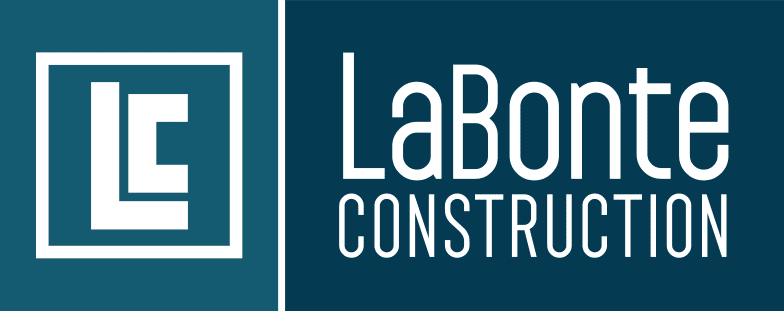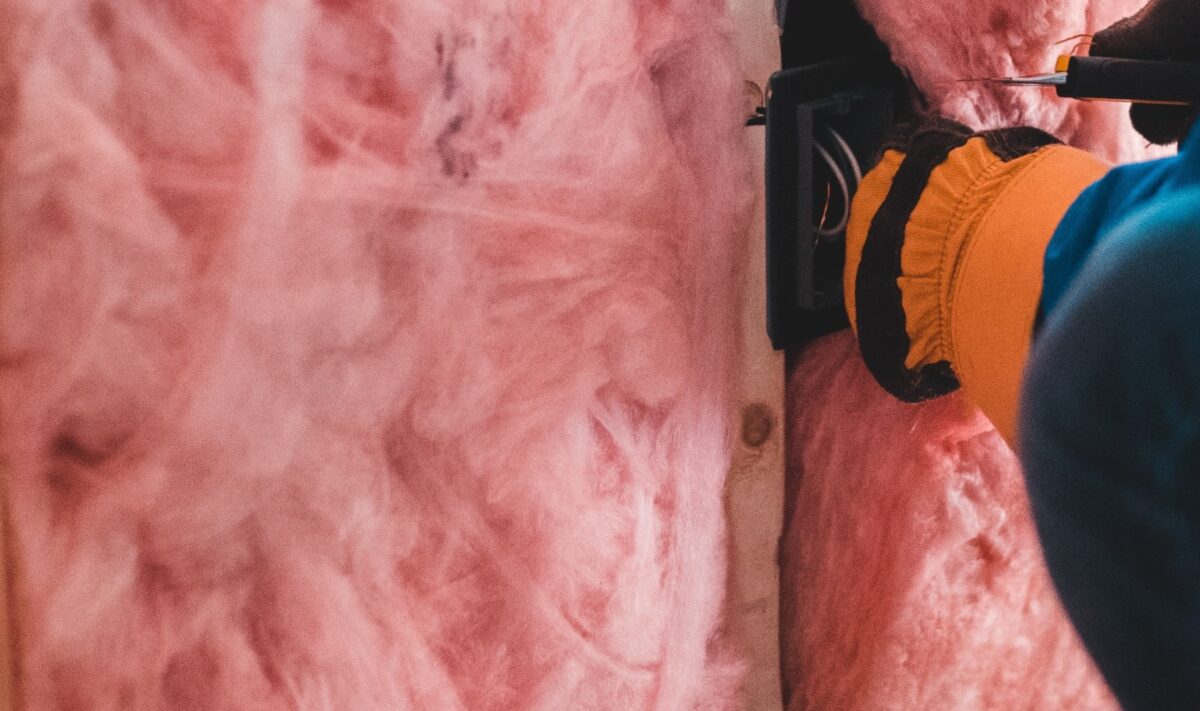There are many different types of insulation to consider when remodeling your home. From the most common, to the most effective, we will take a look at some of the different types of insulation we use in the home remodeling process.
Remodeling With Fiberglass Insulation
Fiberglass is the most common insulation material used today. It is the material LaBonte Construction uses most when insulating a home or home addition. Made from fine glass fibers, fiberglass insulation generally takes the form of batts, rolls and loose-fill. Fiberglass batts are also quickly installed, which provides our clients with a cost-effective option. Common fiberglass insulation brands include Owens Corning or Johns Manville. Fiberglass insulation meets code by having adequate thermal properties and can even provide some acoustic dampening.
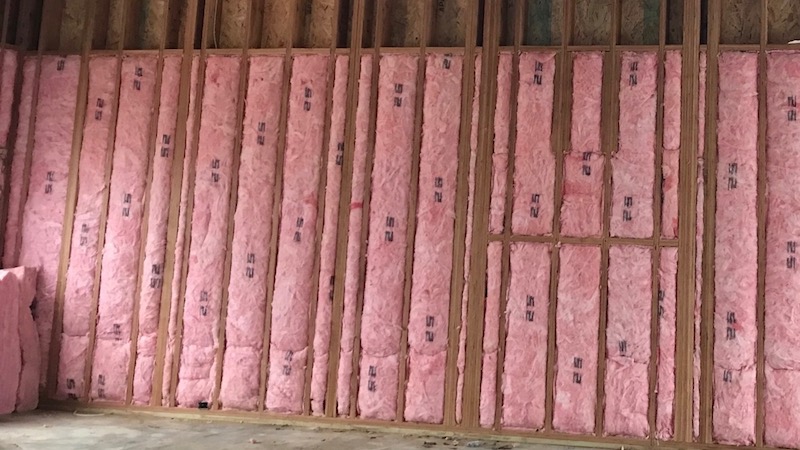
There are several benefits to using fiberglass insulation. It is the most cost-effective, most readily available, it meets code and it is easy to work with. Fiberglass insulation comes in all off the necessary joist spacing sizes, R-Values and facings which makes it easy to find the right option. Because it contains sand and recycled glass, fiberglass insulation is naturally noncombustible.
Remodeling With Spray Foam Insulation
The second most common type of insulation we use in the remodeling process is spray foam. Spray foam insulation is used to seal wall, floor and ceiling cavities against air movement. If applied correctly, spray foam never loses its shape over time. It will not compress, sag nor settle. The foam is made from organic chemical compounds derived from petroleum extracts. Although that may sound dangerous, it is considered environmentally safe and one of our favorite options for maximum efficiency.
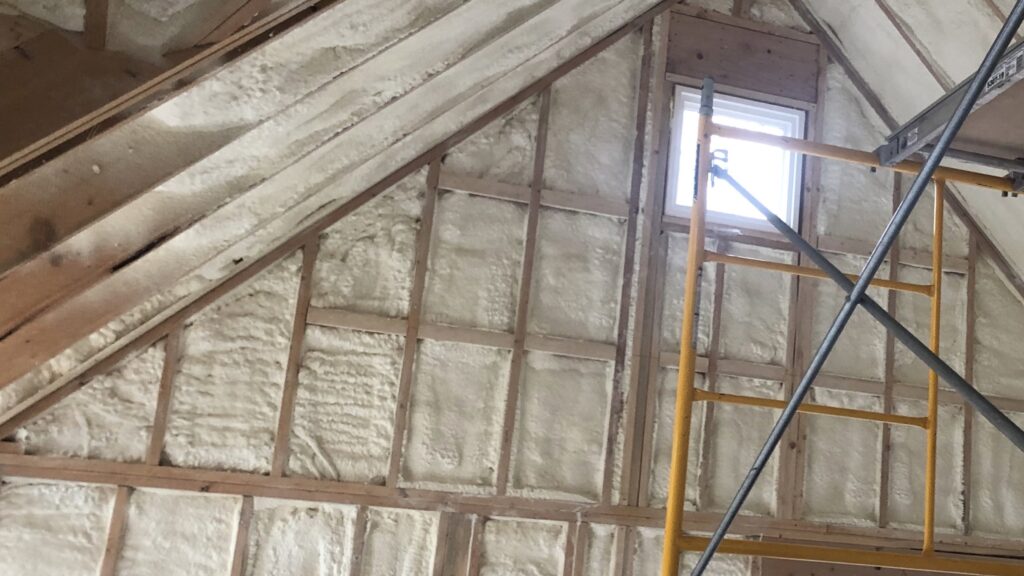
Spray foam insulation can help reduce high energy bills because the foam prevents air leakage. It can also helps prevent ice dams, which can be an issue for some Wisconsinites. The reduced airflow that spray foam creates helps prevent drafts and cold floors. A tighter envelope can lead to a more energy-efficient home.
There are two main types of spray foam insulation: Closed Cell and Open Cell.
Closed Cell
Closed cell spray foam insulation creates an air seal within the home and provides continuous insulation. We use closed cell foam regularly at LaBonte Construction, and Johns Manville Corbond III® is one of the most common closed cell options we use. It can be applied to open cavities of new homes, existing homes, pole barns and commercial buildings. Closed cell foam is durable, and can be left exposed without worrying about damage to the foam. It is unique in that it does not require a roof to be vented during the remodeling process, and the entire home envelope can be sealed which creates a tighter home.
Closed cell foam is waterproof and limits air leakage where it is installed. Closed cell foam’s higher R-Value per inch of thickness makes it a great option in older homes that have shallow joist cavities. This may not allow for traditional insulation to achieve code without additional furring and carpentry, which may be costly and reduce precious ceiling height.
Open Cell
Open cell spray foam insulation is generally applied to open cavities in any structure. Just like closed cell foam insulation it creates an air seal and provides continuous insulation. It is most commonly used in new homes, existing homes and pole barns. Open cell foam is light, pliable and can expand up to 100 times in volume to fill every crack and crevice where it is sprayed.
Homes naturally shift and settle over time, and open cell insulation will move with the structure without cracking or pulling away from the studs. Unlike closed cell insulation, open cell foam allows moisture to move through it, but it does not soak up or retain the moisture. Because of its composition, open cell foam can dry if the building envelope is properly engineered.
Mineral Wool: A Favorite Of LaBonte Construction
Mineral wool, sometimes referred to as stone wool or ROCKWOOL®, has been around for decades with a proven track record. First patented in the United States by John Player in 1870, mineral wool was first commercially produced in Germany in 1871. It wasn’t until the 1970’s that mineral wool became a common insulation option. Mineral wool is widely used in Canada and Europe, but saw a decline in its usage in the United States over the past thirty years. However, more recently, mineral wool has made a comeback in the U.S., and is now a favorite choice of ours.
Mineral wool is made by melting down basalt stone and recycled slag from steel mills, which is then spun into fiber and formed into batts or boards. It is a terrific option for damp spaces and exterior uses, and it also has greater health benefits when compared to other options.
Mineral wool is also denser than other types of insulation which makes it effective for soundproofing. It is fire resistant and is often used as fire stopping around holes and pipes between floors during remodeling projects. Like open cell foam, mineral wool does not absorb water which discourages the growth of mold and mildew. Containing up to seventy percent recycled materials, mineral wool is an eco-friendly option. Mineral wool also possesses a higher R-value per inch compared to that of traditional fiberglass insulation, making for a warmer home.
Denim Insulation
Denim insulation is not the most widely-used insulation but is one of the highest quality options. Made of scraps and clippings that come from the manufacturing of denim clothing, this insulation is extremely sustainable as it contains around eighty-five percent recycled materials. Its natural cotton fibers are also one hundred percent recyclable at the end of the insulation’s usable life. Manufacturing denim insulation requires much less energy than traditional fiberglass insulation, and is considered an efficient manufacturing process.
As well as being an eco-friendly alternative, denim insulation provides better acoustic dampening when compared to other insulations. Denim insulation can provide up to thirty percent better sound dampening than traditional insulation, making for a quieter home. It also contains no volatile organic compounds (VOC) or formaldehyde, which can contaminate a home’s indoor air. Denim insulation is treated with an EPA-registered fungal inhibitor which protects it from mold, mildew and pests. The insulation is also treated with an EPA-approved borate solution that makes it flame resistant.
AeroBarrier
If you’re looking to insulate your home without having to take apart walls, AeroBarrier is a great option. AeroBarrier can seal air leaks in your home up to ½” in size. Using a blower door, the space is pressurized. From there, a computer controls the rest, including the temperature, pressure, humidity and the distribution of the sealant. Another perk of AeroBarrier is that you can see the results in real time as the blower door test improves.
After the sealing process, work can resume within thirty minutes. The overall process (pre-sealing, preparation, setup/seal/breakdown, cover removal, post test and additional cleanup) takes anywhere from 14-22 hours, depending on the size of the space you are getting air sealed. AeroBarrier is best used in new construction and whole home remodeling projects.
Interior vs. Exterior Insulation
Interior
Interior insulation is required by code, therefore choosing the right option for your home is important. One of the perks in searching for the right interior insulation for your home is that there are many different kinds, so finding the right option shouldn’t be too difficult.
Insulating interior walls can reduce sound transfer from room to room. Interior insulation also helps prevent mold and mildew from building within the walls. Finding the right interior insulation for your home can also help you reduce your energy costs. If less heat escapes from your home you can expect your energy bills to drop.
Exterior
Having exterior insulation in your home is extremely helpful. At LaBonte Construction, we advocate the use of ZIP R-sheathing for your exterior insulation. ZIP R-sheathing is the easiest way a client can add exterior insulation during a remodeling project. The biggest benefit to ZIP R-Sheathing is that it is extremely effective at preventing thermal bridging. It is also handy if you live somewhere noisy, as a ZIP R-sheathing can help dampen some of the outside noise.
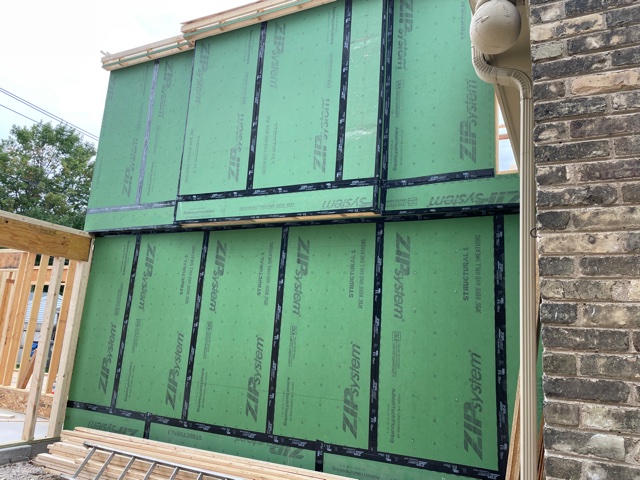
Whether building, remodeling or adding an addition to a home, look to use exterior insulation whenever possible. Installation can be tricky, and is best left to the professionals.
R-Value Requirements
Each type of insulation is assigned an R-value. An R-value is the measure of an insulation’s ability to resist heat traveling through it. The higher the R-value, the better the insulating performance and resistance to heat loss. In the United States (and its territories) there are eight different zones that are used to determine the required R-value for insulation.

Below are the R-value requirements from the Uniform Dwelling Code (UDC) for different parts of a structure in Zone Six (Milwaukee County’s Zone):
- Attics: R49-R60
- 2×4 Walls: R13-R15
- 2×6 Walls: R19-R21
- Floors and Crawl Spaces: R25-R30
Final Thoughts
Insulation is a key part of the building and remodeling process. Finding the right insulation for your home can make your home more comfortable. Please contact us at LaBonte Construction to discuss a remodeling project incorporating the best insulation practices.
